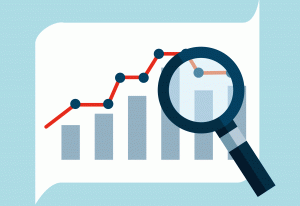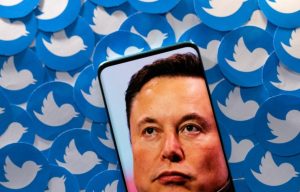
Everything you do within a sales funnel points to one ultimate goal:
A conversion.
In many sales funnels, the final step prior to conversion is a landing page. Many marketers don’t realize how important this singular location is for your success. If it is missing critical pieces, your conversion rate won’t be as high as you would like it to be.
A great landing page is a lot like a popsicle; you want it to be sticky as can be. The landing page should be a veritable spider’s web that catches leads and never lets go until they convert. There’s no single formula for a perfect landing page, but there are plenty of things you can do.
When you look for advice on landing pages, you’ll see many of the same tips, but all of them are missing something; five things in fact. I’m going to show you five elements that every landing page needs to lock down before it goes live. It’s time to stop losing people at the last minute because of a small mistake that could have been prevented.

5 Must-Have Elements For a Successful Landing Page
1. Eliminate Extra Navigation
Depending on your website’s infrastructure, you’ll probably have a navigation bar on your pages with buttons for each of the main pages. One of the worst mistakes you can make on your landing page is leaving a door open for the lead to leave.
Leaving navigation buttons on a landing page gives the visitor a chance to click away. I can guarantee you that if they click on them they won’t come back. After all, the unique path they took to get to your landing page is now gone.
According to Marketing Sherpa, only 16% of landing pages are free of navigation bars! That leaves 84% of marketers that simply let their leads walk out in the final moments. Don’t be one of them. Hide your navigation bar on landing pages every time.
2. Match Content From the Visitor’s Source
There are a variety of places that lead to landing pages on a website. People don’t always reach a landing page the same way. They could come from an ad on social media, a link on your site, a PPC ad on Google, or somewhere else entirely.
Ultimately, you know which backlinks are pointing to your landing pages. This opens up a unique opportunity for you to enhance the all-important user experience. Customize your landing pages to match the tone and topic of the page the user left to arrive there.
Let’s use an example:
My lead just clicked a PPC ad advertising a guide on how to start a blog. When they hit my landing page, the content will be geared towards this topic. There will also be an incentive in the form of a free guide to help them once they’ve set up their hosting service.
It’s all about keeping the theme intact throughout the experience. Don’t let them wonder what they’re doing on your landing page once they arrive. Cater the content to the backlinks that are pointing to that page so the experience is cohesive.
3. Make Your Landing Pages Shareable
This one is very easy, but it goes a long way. Someone who comes to your landing page and converts is excited about your brand. You can harness that enthusiasm by giving them the opportunity to share their newfound discovery on social media.
Simply include social sharing buttons on your landing pages (perhaps near the bottom or side) encourage satisfied customers to share their experience on social media. This, in turn, creates new and exciting CTAs that were organically made by your new converts!
Now, I know what you’re thinking:
I’ve never seen a landing page worth sharing.
On that, we can agree, which is why we’re going to change that, starting with you. Let’s begin with what makes people share. According to the NY Times Insights Group, there are four motivations for sharing:
- To define ourselves to others
- To bring value or entertainment to others
- To grow or nourish a relationship
- To spread the word about a brand or cause we care about
Combine this with further studies that show emotional content gets more shares, and we’ve got ourselves a recipe brewing for our landing pages. In order to make a landing page shareable, we have to hit on as many of these points as possible, while also creating an emotion that will drive readers to share it.
Here are three ways you can implement shareable content into your landing pages:
1. Tell a Story
It may sound impossible to do this; after all, landing pages have very little in the way of written content like standard posts, but a story doesn’t have to be told in words. Take a look at your landing pages and look at all the separate pieces.
Yes, you’re selling them something, but what are you telling them? Try incorporating your own story or your brand’s story into your headline. Something along the lines of This One Trick Saved my Business. This headline communicates urgency and suggests a story at the same time.
Then, as the reader scans the landing page, make sure the pictures, the testimonials, and everything else fit together to tell the story that your headline was suggesting. If someone converts and it truly does help them, or they feel positive about the experience, they’re more likely to share.
2. Offer Something For Free
This plays into the positive emotions we feel when we get something for free. Let’s say you’re offering a blogging class on your landing page. What if you threw in a free eBook or PDF that suggests tons of other free blog sites that you would recommend?
Now you’re adding additional value in the form of actionable advice they can use after your course. All of that and it’s a freebie? Of course, they’ll be excited to share.
This freebie would be exciting for someone looking for all the tools they can get their hands on. Use that excitement to generate social shares. Once the process is complete and they have their download, offer a quick “thank you” and present them with social media sharing buttons.
Provide a CTA along the lines of “Tell Your Friends About This Amazing Deal!” If was pleased, not only with the purchase I made but also with the freebie I got, I would absolutely be inclined to share it on social media.
3. Make Your Audience Look Good
Excitement or positive energy isn’t enough to get someone to share your landing page. You need to combine it with a sense of pride. After all, we love to brag. Research has shown that people are 25% more likely to buy a product they would be proud to own.
Furthermore, those same people would be 25% more likely to convert if there is a social media sharing button placed near the product. Say, on a landing page? Take Poo-Pourii for example. Their product is for use in the restroom, but the approach they take is both respectful and classy.
Obviously, your product would be something completely different, but that is a perfect example of making the audience look classy and being funny without becoming offensive. So, ask yourself why your audience would be proud to own your product?
Answer that question in your landing pages, and you’ll find that people will click the share buttons you’ve so thoughtfully included.
4. Include Social Proof
Social proof, put simply, is the influence that happens when someone finds out that other people are doing something. It’s that feeling you get when you pass an ice cream shop with a line out of the door. You assume they must have phenomenal ice cream.
Susan Weinschenk, author of Neuro Web Design: What Makes Them Click? describes social proof by saying: “If you want people to act on the data, then you need to couple it with emotional data.”
For marketers, this translates to testimonials. No landing page is complete without quotes from other customers that show new people how the product has benefited someone else. Something as simple as a few customer reviews can convince them to convert.
These quotes should be placed near or under the main image on your landing page. This gives the visitor the social proof they need to be swayed. Make sure you include the following information with your testimonials:
- A photo
- The person’s name
- The company or organization they represent (if applicable)
- Their job title (if applicable)
5. Provide Pain (And Pleasure)
I’m sure you had an odd feeling when you read that. As human beings, we don’t like pain. In fact, we’re genetically hardwired to avoid it at all costs. When we see anything that causes discomfort mentally or physically, we want to put some distance between it and us.
Here’s the thing:
You should include pain in some form with your landing pages. I know that sounds insane but bear with me. You see, by telling someone what they’re losing or calling to mind the problems your product solves, you triggering that part of their instinctual brain that alerts them to pain.
If you leave them with this feeling, though, they’ll run away screaming. If you’re going to pinch a nerve, you need to balance it with pleasure. You have to relieve the pain.
Here are some ways to create pain within your landing pages:
- Present them with a problem (We all hate it when…)
- Show images of people in a painful situation regarding your product/industry (a construction worker without a hard hat getting hit in the head.)
- Trigger a feeling of regret (Remember that time when you made this choice?)
Causing pain is easy, but balancing it with pleasure takes skill. To create this sense of pleasure, talk about the benefits of your product. Go beyond simple things like it’s exact purpose. Talk about how it benefits the user.
If you’re selling cleaning products, don’t just mention that they kill germs. Instead, sell the user the peace of mind they’ll have knowing that their homes are safe for themselves and their loved ones. Drive home the benefits and the emotional pleasures they will gain from your product.

Here are five ways you can balance that pain with pleasure in your landing pages:
1. Focus on Them
We’re hardwired to think about ourselves first. When you’re speaking to someone on your landing page, use the word “you” a lot. Talk about them, their feelings, and their overall well-being.
2. Be Clear and Concise
Confusion is the enemy of anything pleasurable. Eliminate this by being very clear in how you describe your product. If you’re using real world examples, then accompany them with pictures of the action in question. Removing any and all friction both mental and physical will ensure that the experience is smooth.
3. Create a Smooth Flow
Don’t present your users with a scattered landing page. If anything, present it in a long-form fashion that creates a clear path for the eyes to follow. The flow should lead them through to the conclusion and your call-to-action.
4. Utilize Positive Visuals
Happiness is contagious. If you incorporate positive imagery into your landing page, you’re going to convey that same emotion to your user. Case and point: always include images of people smiling, bright colors, or even a few irresistible animal photos if you’re feeling lucky.
5. Use Positive Verbiage
The same lesson from above applies to your text. When you’re writing copy for landing pages, use optimistic words and phrases to convey that pleasure intended to balance the pain. Furthermore, keep the tone light and upbeat. Don’t bog down the page with too much text. Make it simple and fun.
Final Thoughts
Landing pages may be the final step before a conversion, but they are arguably the most important step of all. Implement these simple, but critical elements into your pages to make the most of the work you’ve put into them.
How do you optimize your landing pages? Which of these elements will you be adding into your marketing? Let us know in the comments!
Digital & Social Articles on Business 2 Community(93)
Report Post



